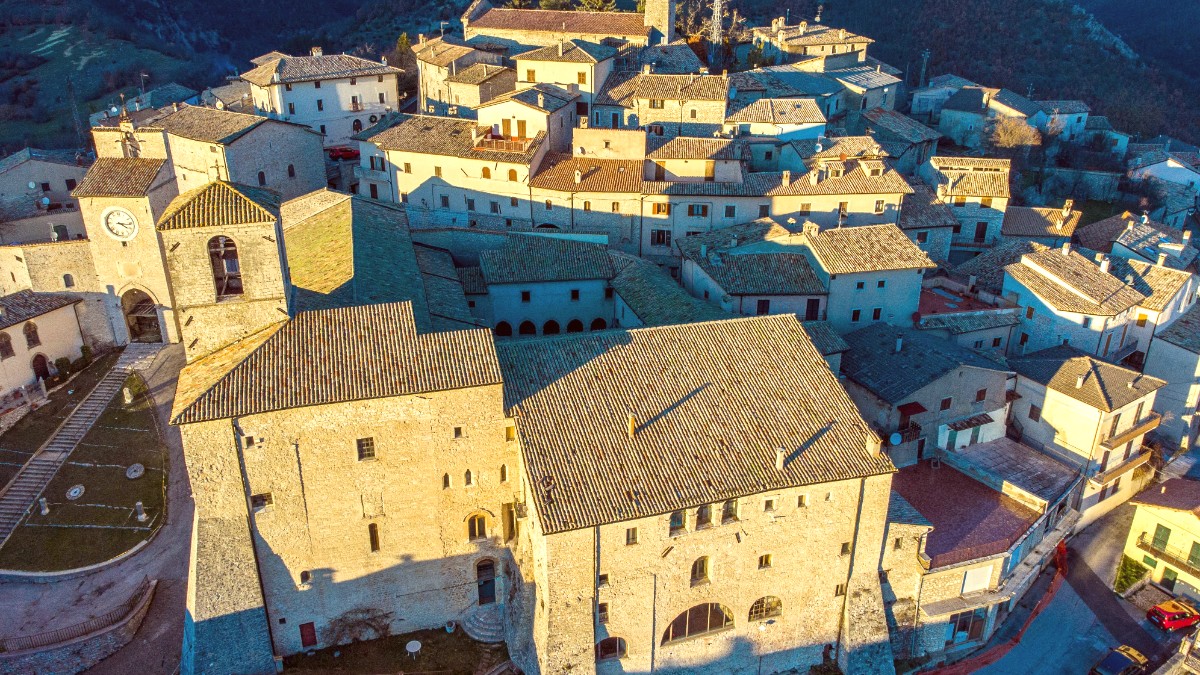
Umbria And Le Marche, Italy
Umbrian cuisine is simple and uses high-quality locally grown or raised ingredients. Seafood is less prominent. The food is hearty and often has rich flavors.
Umbrian food traces its roots to Etruscan, Roman, and medieval traditions. Simple preparations let natural flavors shine. This style, known as "cucina povera" (poor cooking), transforms basic ingredients into satisfying dishes.
Spoleto's cuisine highlights local truffle dish variations. Specific cured meats are produced here.
Restaurants often source ingredients from local farms and producers.
Garlic, rosemary, sage, and other Mediterranean herbs are common to enhance natural flavors.
Hand-rolled pasta with a rich black truffle sauce. A quintessential Spoleto dish.
Found in most traditional trattorias.
Fresh tagliatelle pasta with a robust, slow-cooked wild boar meat sauce. A hearty local favorite.
Widely available in restaurants.
A savory, fatty, moist boneless pork roast, seasoned with garlic, rosemary, and fennel.
Served in sandwiches from street vendors or as a main course.
A sandwich generously filled with succulent porchetta slices. A quick, delicious, and satisfying lunch or snack.
Pizza by the slice, available at many bakeries or specialized pizzerias. A convenient and affordable option.
Spoleto offers a selection of fine dining restaurants, often in elegant settings within the historic center. They focus on refined Umbrian cuisine and extensive wine lists.
Numerous trattorias and osterias make up Spoleto’s dining scene. These establishments offer excellent quality, traditional Umbrian food at reasonable prices.
Pizzerias for sit-down or takeaway. Bars/cafes for breakfast pastries and coffee. Deli/butchers sell porchetta sandwiches.
The main market square often hosts local produce and food stalls, especially on Friday mornings. A place to absorb local life.
Find freshest local ingredients here.
Specialized food shops (gastronomias, salumerie, panifici, formaggerie) offer high-quality local products for snacks or self-catering.
Purchase local cheeses, meats, bread.
Spoleto's strength rests on traditional Umbrian cuisine.
Visitors typically seek local flavors.
You might locate a Chinese restaurant or pizzeria with international toppings.
International cuisine is not a main dining focus in Spoleto.
Halal and Kosher food options are not commonly found in Spoleto.
Travelers with these specific dietary needs should plan to self-cater from supermarkets.
Research specialized restaurants in larger Italian cities if this is a priority.
Carry a translation app or card for clarity.
Inform restaurant staff about severe allergies. Use a translation app or a pre-written card in Italian listing your allergies.
Use Google Maps with filters like "vegetarian" or "vegan". The HappyCow app helps locate vegan/vegetarian restaurants.
Local operators and agriturismos offer classes focused on traditional Umbrian pasta making (like strangozzi) or truffle dishes.
Arrangements often combine visits to local producers, tastings, and guided exploration of Spoleto’s gastronomic highlights.
Visit local olive oil mills (frantoi) during harvest (Oct-Nov) for tours and "olio nuovo" tastings. Explore wineries in Montefalco for tours and tastings.
Immerse yourself in history.
Many agriturismos prepare meals with ingredients grown directly on their farm. A true farm-to-table experience in a peaceful rural setting.
Taste local freshness.
An annual food and wine event, typically in autumn, showing local products for tasting and purchase.
Numerous small festivals celebrating new olive oil occur in autumn across Umbria, including near Spoleto.
Dedicated truffle markets and fairs happen in various Umbrian towns throughout the year, with black truffle fairs common in autumn and winter.
Experience Spoleto's cuisine according to the season: